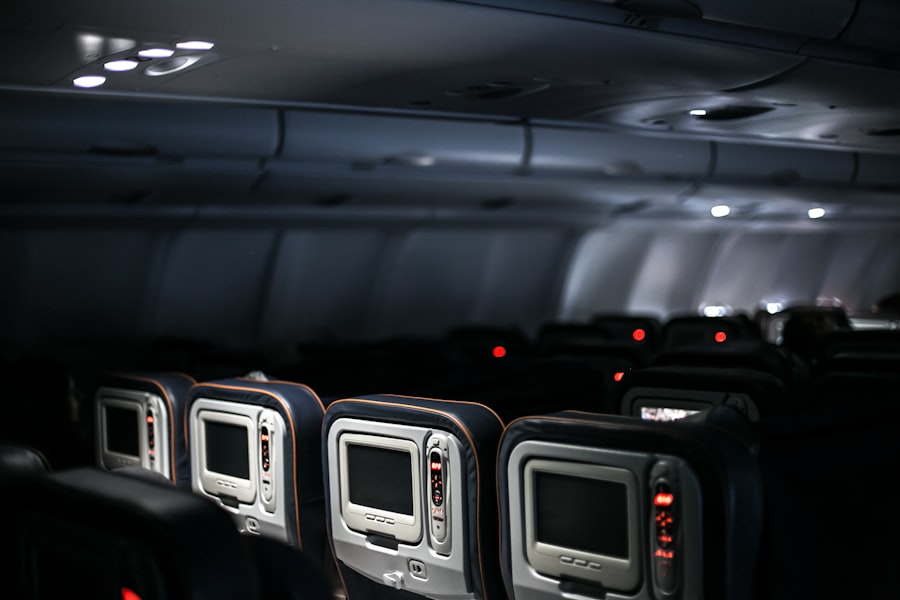
The role of a flight attendant is multifaceted, encompassing a range of responsibilities that extend far beyond simply serving refreshments and ensuring passenger comfort. At its core, the flight attendant’s primary duty is to ensure the safety and well-being of all passengers aboard an aircraft. This involves conducting pre-flight safety checks, demonstrating emergency procedures, and being prepared to respond to any in-flight emergencies.
Flight attendants are trained to handle a variety of situations, from medical emergencies to potential security threats, making them a crucial part of the aviation team. Their presence not only enhances the travel experience but also instills a sense of security among passengers, who rely on their expertise during flights. In addition to safety, flight attendants play a vital role in customer service.
They are often the face of the airline, representing its brand and values while interacting with passengers. This requires a unique blend of interpersonal skills, patience, and empathy, as they cater to the diverse needs of travelers from various backgrounds. Whether it’s addressing a passenger’s concerns, accommodating special requests, or simply providing a warm smile, flight attendants are essential in creating a positive atmosphere on board.
Their ability to manage stress and maintain professionalism in challenging situations is what sets them apart in the aviation industry, making their role indispensable in ensuring a pleasant flying experience.
Key Takeaways
- The role of a flight attendant is to ensure the safety and comfort of passengers during flights, as well as to provide excellent customer service.
- Training and education requirements for flight attendants typically include a high school diploma or equivalent, as well as completion of a training program provided by the airline.
- Job duties and responsibilities of a flight attendant include conducting pre-flight safety checks, assisting passengers with boarding and disembarking, and responding to in-flight emergencies.
- The salary and benefits for flight attendants can vary depending on the airline, but typically include competitive pay, health insurance, and travel perks.
- Career opportunities and advancement for flight attendants may include moving into supervisory or training roles, as well as transitioning into other areas of the airline industry such as management or corporate positions.
- The challenges of being a flight attendant include long hours, irregular schedules, and dealing with difficult passengers, but the rewards include the opportunity to travel and meet new people.
- Tips for becoming a successful flight attendant include having excellent communication and customer service skills, being adaptable and able to handle stressful situations, and being physically fit and able to meet the demands of the job.
Training and Education Requirements
Becoming a flight attendant typically requires a combination of formal education and specialized training. While many airlines prefer candidates with at least a high school diploma or equivalent, an increasing number are seeking individuals with college degrees, particularly in fields related to hospitality or communication. This educational background can provide aspiring flight attendants with valuable skills in customer service and conflict resolution, which are essential in their day-to-day interactions with passengers.
Additionally, proficiency in multiple languages can be a significant asset, as it allows flight attendants to communicate effectively with a broader range of travelers. Once hired, candidates undergo rigorous training programs that can last several weeks. These programs cover a wide array of topics, including safety protocols, emergency procedures, first aid, and customer service techniques.
Trainees learn how to operate emergency equipment, conduct safety demonstrations, and manage in-flight services. Furthermore, they participate in simulations that prepare them for real-life scenarios they may encounter while on duty. This comprehensive training ensures that flight attendants are well-equipped to handle any situation that may arise during a flight, reinforcing their critical role in maintaining passenger safety and comfort.
Job Duties and Responsibilities

The job duties of a flight attendant are diverse and dynamic, requiring adaptability and quick thinking. One of their primary responsibilities is to conduct pre-flight briefings with the flight crew to discuss safety protocols and any special passenger needs. Once on board, they greet passengers as they board the aircraft, assist with stowing luggage, and ensure that everyone is seated and buckled in before takeoff.
Throughout the flight, flight attendants monitor the cabin for any issues that may arise, such as passenger discomfort or medical emergencies. They must remain vigilant and attentive, ready to respond promptly to any situation that could compromise safety or passenger satisfaction. In addition to safety-related tasks, flight attendants are responsible for providing exceptional customer service during the flight.
This includes serving meals and beverages, addressing passenger inquiries, and managing any conflicts that may arise among travelers. They must possess strong communication skills to effectively convey information and instructions while also being sensitive to the needs of passengers. Moreover, flight attendants often engage in post-flight duties such as ensuring the cabin is clean and organized for the next group of travelers.
This multifaceted role requires not only technical knowledge but also emotional intelligence and resilience to navigate the complexities of air travel.
Salary and Benefits
| Category | Details |
|---|---|
| Salary | 60,000 per year |
| Bonuses | 10% of annual salary |
| Health Insurance | Medical, Dental, Vision |
| Retirement Plan | 401(k) matching up to 5% |
The salary of a flight attendant can vary significantly based on factors such as experience, airline, and geographic location. On average, entry-level flight attendants can expect to earn a salary ranging from $30,000 to $50,000 per year. However, as they gain experience and seniority within their airline, this figure can increase substantially.
Many seasoned flight attendants earn upwards of $70,000 annually or more, particularly those who work for major airlines or hold supervisory positions. Additionally, flight attendants often receive compensation for layovers and overtime hours worked, which can further enhance their overall earnings. Beyond salary, flight attendants enjoy a range of benefits that make the profession appealing.
Most airlines offer comprehensive health insurance plans that cover medical, dental, and vision care for employees and their families. Furthermore, many airlines provide retirement plans and employee stock purchase options that allow flight attendants to invest in their future. One of the most attractive perks of being a flight attendant is the opportunity for travel; employees often receive discounted or free flights for themselves and their families.
This unique benefit allows them to explore new destinations around the world while enjoying the flexibility of their schedules.
Career Opportunities and Advancement
The aviation industry offers numerous career opportunities for flight attendants looking to advance their careers. Many start as entry-level attendants but can progress to senior positions within their airline over time. Advancement opportunities may include roles such as lead flight attendant or purser, where individuals take on additional responsibilities such as managing cabin crew operations or overseeing in-flight services.
Some flight attendants may also choose to specialize in certain areas, such as international flights or premium services for first-class passengers. These specialized roles often come with increased pay and additional perks. Moreover, experienced flight attendants may find opportunities beyond traditional cabin crew roles.
Some may transition into training positions where they educate new hires on safety protocols and customer service techniques. Others might explore roles in airline management or operations, leveraging their firsthand experience in the industry to contribute to organizational success. The skills developed as a flight attendant—such as communication, problem-solving, and teamwork—are highly transferable and can open doors to various career paths within aviation or even other sectors.
Challenges and Rewards of the Job

While the role of a flight attendant is rewarding in many ways, it is not without its challenges. One significant hurdle is the irregular hours associated with the job; flight attendants often work nights, weekends, and holidays due to the nature of air travel schedules. This can lead to difficulties in maintaining a work-life balance and spending time with family and friends.
Additionally, dealing with difficult passengers or managing conflicts among travelers can be stressful and emotionally taxing. Flight attendants must possess strong coping mechanisms to navigate these challenges while maintaining professionalism and composure. Despite these challenges, many flight attendants find immense satisfaction in their work.
The opportunity to travel frequently allows them to experience different cultures and meet people from all walks of life. The camaraderie developed among crew members during flights fosters strong relationships that often extend beyond the workplace. Furthermore, the ability to make a positive impact on passengers’ travel experiences can be incredibly fulfilling; many flight attendants take pride in providing exceptional service that enhances the overall journey for travelers.
Ultimately, the blend of challenges and rewards makes this profession uniquely enriching for those who embrace it.
Tips for Becoming a Successful Flight Attendant
Aspiring flight attendants can enhance their chances of success by focusing on several key areas during their preparation for this dynamic career. First and foremost, developing strong interpersonal skills is essential; effective communication and empathy are crucial when interacting with passengers from diverse backgrounds. Engaging in customer service roles prior to applying can provide valuable experience that translates well into the aviation industry.
Additionally, honing problem-solving abilities will prepare candidates for handling unexpected situations that may arise during flights. Another important tip is to stay informed about industry trends and airline policies. Understanding the nuances of different airlines can help candidates tailor their applications and interviews accordingly.
Networking within the aviation community can also be beneficial; attending industry events or connecting with current flight attendants on social media platforms can provide insights into the profession and potential job openings. Finally, maintaining physical fitness is vital; being a flight attendant often requires long hours on one’s feet and managing various physical tasks throughout the day. By focusing on these areas, aspiring flight attendants can position themselves for success in this rewarding career path.
If you’re exploring various career options in the USA, you might find the article on Careers in the USA particularly enlightening. This comprehensive guide offers insights into a multitude of professions, including a detailed section on flight attendants. It provides valuable information on the responsibilities, required training, and potential career paths within the aviation industry, making it a great resource for anyone considering a career as a flight attendant or looking to understand more about this field.
FAQs
What are the requirements to become a flight attendant in the USA?
To become a flight attendant in the USA, candidates must be at least 18 years old, have a high school diploma or GED, and be legally authorized to work in the country. They must also have a valid passport and be able to pass a background check and drug test.
What training is required to become a flight attendant?
Flight attendants in the USA must complete training provided by their employer, which typically includes safety and emergency procedures, customer service skills, and specific aircraft training. This training is regulated by the Federal Aviation Administration (FAA) and must be completed before beginning work as a flight attendant.
What are the job prospects for flight attendants in the USA?
Job prospects for flight attendants in the USA are expected to be favorable, with the Bureau of Labor Statistics projecting a 17% growth in employment from 2020 to 2030. However, competition for jobs at major airlines may be strong, and candidates with a college degree and previous customer service experience may have an advantage.
What is the average salary for flight attendants in the USA?
According to the Bureau of Labor Statistics, the median annual wage for flight attendants in the USA was $56,000 in May 2020. However, salaries can vary based on factors such as experience, employer, and geographic location.
What are the working conditions like for flight attendants in the USA?
Flight attendants in the USA can expect to work irregular hours, including nights, weekends, and holidays. They may also be away from home for extended periods of time, depending on their flight schedule. The job can be physically demanding, as flight attendants are required to stand for long periods and lift heavy objects.



